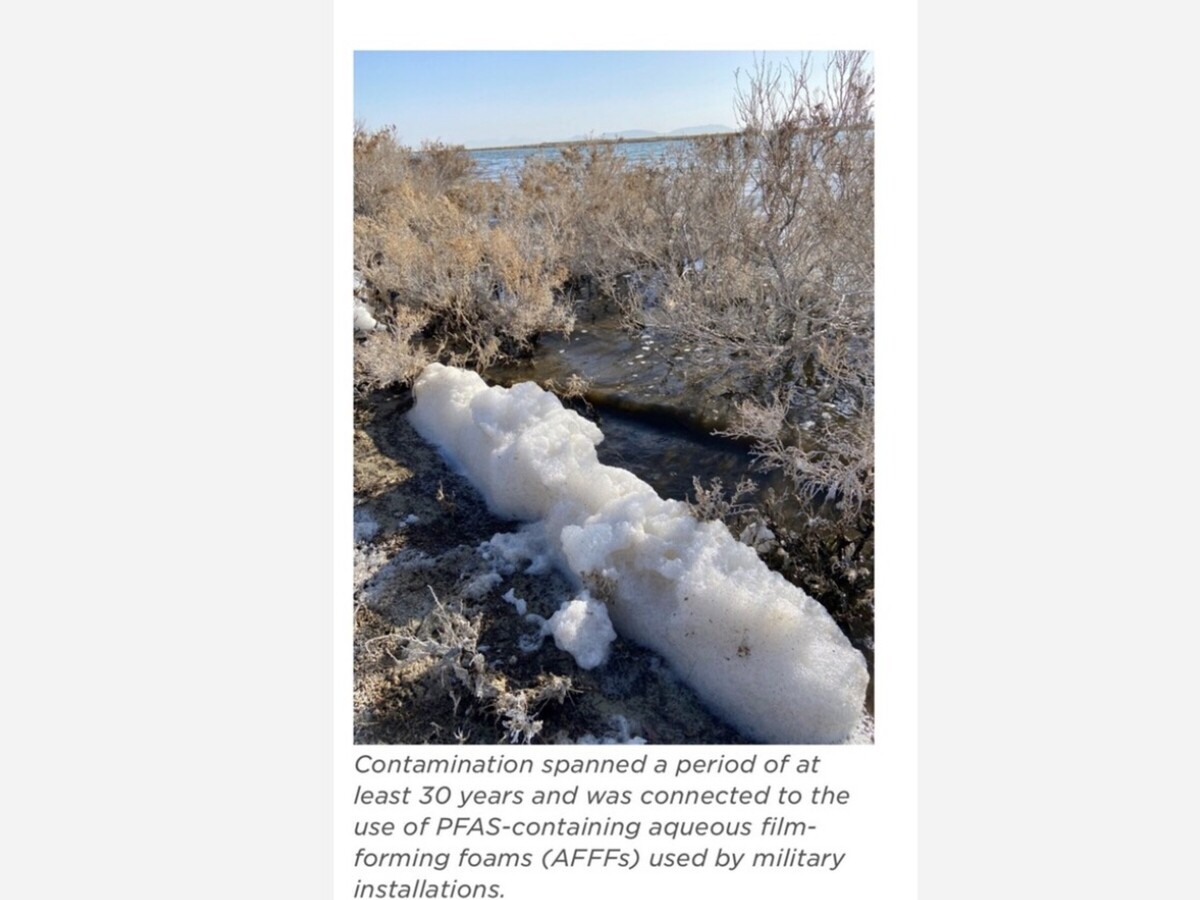Image


With an increase in cancer rates being reported near U S Air Force bases such ss Cannon and high amounts of PFAS should Otero County residents be concerned?
News headlines of world record levels of contamination of PFAS such as those being found at Holloman Lake in most communities would spark a panic and a huge political outcry for fear of those contaminants leeching into the local community water supply. In Alamogordo and most especially via Otero county government which operates the department of public health the reaction has been crickets.
AlamogordoTownNews.org previously reported that team of researchers from The University of New Mexico’s Museum of Southwestern Biology (MSB) has shared new research on the contamination at Holloman Lake in southern New Mexico. The team began studying PFAS contamination of wildlife at Holloman Lake in 2021.
Then the base commander at Holloman Air Force Base has closed Holloman Lake.
Now, first-of-its-kind blood testing study in New Mexico found that 99.7% participants living or working near Cannon Air Force Base had one or more per- and poly fluoroalkyl substances (PFAS), or “forever chemicals,” in their blood, with residents near the base’s contamination plume three times more likely to have elevated levels.
The New Mexico Environment Department (NMED) and New Mexico Department of Health (NMDOH) released the results today from the $1.2 million PFAS blood testing project, funded entirely by NMED, for 628 people in rural Curry County near Cannon Air Force Base.
Key Findings
The most commonly detected PFAS chemicals detected in participants’ blood are historically used in firefighting foams: • PFOS: 99.7% of blood samples — heavily used in military and airport firefighting foam
PFOA: 99.5% of blood samples — found in firefighting foam, nonstick cookware, waterproof clothing, and food packaging
PFHxS: 98.2% of blood samples — used as a PFOS replacement in firefighting foam
PFNA: 90.4% of blood samples — occasionally used in firefighting foam and other industrial applications
Link to base contamination
The data strongly suggests a correlation between Cannon Air Force Base’s PFAS contamination and PFAS blood levels detected in the participants of the study. Residents living in the plume area showed dramatically higher concentrations, with 26% carrying the highest concentration tier used in national guidelines — over 10 times the rate of the broader testing group
“The results put heartbreak into hard facts,” said Environment Department Secretary James Kenney. “This evidence of the harm the U.S. Air Force has done to its neighbors is a call to action to immediately address its longstanding, neglected, toxic PFAS plume that continues to expose the families of Curry County.
The data in this report contributes to a growing body of evidence showing that the Air Force’s use of PFAS-laden firefighting foams has damaged the health and well-being of residents in nearby communities,” said Department of Health Secretary Gina DeBlassie.
“My department will continue to work with NMED to provide support to New Mexicans in impacted areas of Curry County and across the state.
Health and environmental impact PFAS — known as “forever chemicals” — remain in the body and are linked to health risks including certain cancers, reproductive issues, and elevated cholesterol levels.
The chemicals have been detected in Cannon Air Force Base groundwater at concentrations of 26,200 parts per trillion, exceeding state and federal drinking water standards by over 650,000%.
The base’s use of PFAS-laden firefighting foams created a four-mile toxic groundwater plume extending southeast, leading to the euthanizing of 3,500 dairy cows poisoned with PFAS.
Now, this study shows that at least 628 individuals who live or work in the PFAS blood testing project area have one or more PFAS chemicals in their blood associated with firefighting foams.
Immediate state response NMED and NMDOH are taking immediate action to help affected residents:
• $12 million to connect Curry County private water well users to public water.
• Health recommendations for participants with the highest PFAS levels.
• Continued well testing and treatment systems for high-risk areas of PFAS contamination.
• Healthcare provider education on PFAS health effects.
• Expanded PFAS assessments to other communities, including those near Holloman Air Force Base.
• Strengthening regulations to protect against future contamination
A public meeting is scheduled and other efforts to be determined.
NMED and NMDOH will host a public meeting Thursday, Oct. 23 to discuss the report’s findings in greater detail and offer support to those harmed by Cannon AFB’s PFAS contamination
In addition to its blood and well water testing initiatives, NMED is currently in litigation with the U.S. Air Force in multiple lawsuits seeking to hold them accountable for the PFAS contamination they’ve caused, including the plume extending off-base.
To date, NMED has spent more than $12 million in legal and technical costs on the lawsuits and will soon spend an additional $12 million to connect private well users in the area to the local public utility.
The full report can be found here.
https://www.env.nm.gov/wp-content/uploads/2025/08/2025-08-12-NMED-NM-PBT-Project-Report-Final-2.pdf
i'm old enough to remember when i. e. dupont de nemours advertised, using the slogan, better living through chemistry. been awhile since that ad copy was current...now it seems that every step "forward" is accompanied by at least one step backward. sometimes it seems that progress has reached the point of diminishing returns.